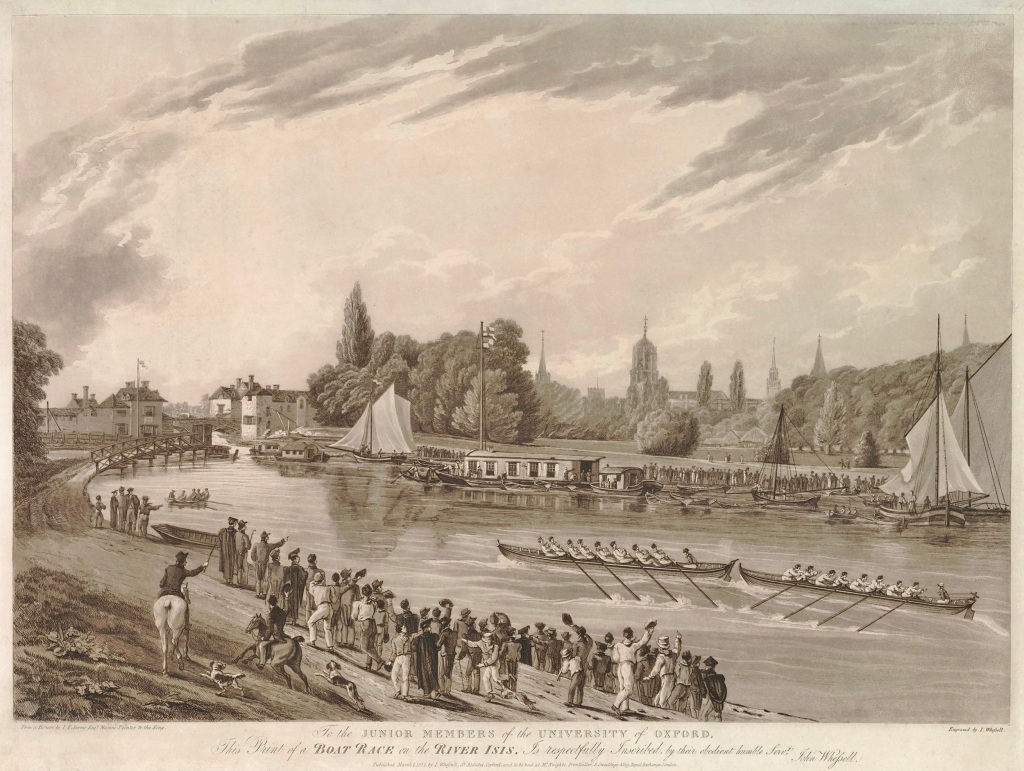
31 May 2024
By Tim Koch
Tim Koch follows Jesus and forty-two disciples on their holiest day.
As Oxford University is over 900 years old, something that has been happening there for just over 200 years may be thought of as a fairly recent innovation. After all, this is a place where “New College” was founded in 1379. However, two centuries in amateur rowing terms is a long time.
In 1815, boats manned by students from Jesus and Brasenose colleges raced each other home following an excursion to Iffley lock. Brasenose won and did so again in the following year. In 1817, Christ Church joined in and was “Head” in the next three contests. Exeter was the next college to compete, winning in 1824. Exeter likes to point out that the second-placed finishes in 1815 and 1816 of its Turl Street rival, Jesus, remain its men’s highest-ever position on the river. On the Cam, the Cambridge equivalent, “Mays,” started in 1827.

While the Oxford – Cambridge Boat Race attracts worldwide interest from rowers and civilians alike, bump racing is a little known even within the rowing community. However, Oxford’s Eights Week (aka Summer Eights) and Cambridge’s Mays are the pinnacle of college rowing at these two institutions, and, unlike the University Boat Race, they offer college rowers of almost any standard a chance of some sort of aquatic success, even if it is as unambitious as “avoiding spoons” I.e. to not be “bumped” on each of the four days of racing.
This year, 2024, marks the tenth anniversary of my first visit to Oxford’s summer bumping races. After that first visit in 2014, I wrote:
It is a truth universally acknowledged that the British, if they possibly can, will take a perfectly sensible sport and devise a race:
1) With rules so complex that they are almost impenetrable to an outsider.
2) Which is so potentially dangerous that, had it been invented today, it would be banned.
3) Where there is a clear hierarchy that is very difficult to challenge.
4) That has its own nomenclature and arcane rituals.
5) Where the spectators can drink copious amounts of alcohol in very pleasant surroundings and treat watching the racing as an option.
The form of boat racing known as “Bumps” at Oxford (and Cambridge) ticks all these boxes – but this is not a criticism. In fact, bumps are a brilliant and fair way of allowing the maximum number of participants of extremely varying abilities to race on a most unsuitable stretch of river and, moreover, it results in a large portion of them becoming “winners” in one way or another.
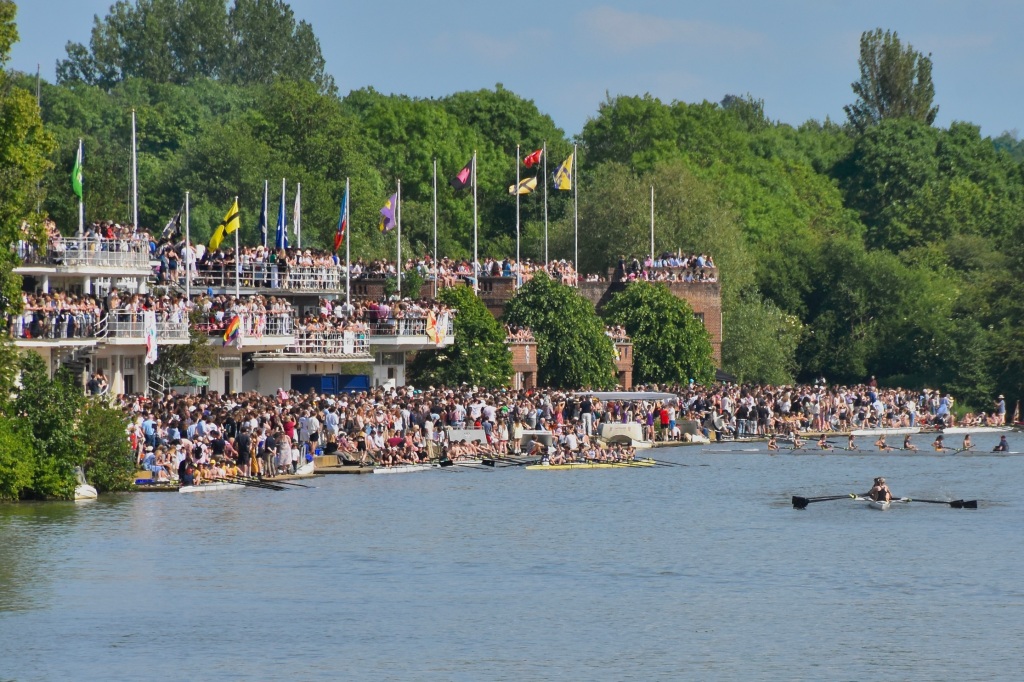
Bump racing between crews from most of the 43 colleges and halls that make up the university originated because the Thames at Oxford (the Isis) is too narrow for side-by-side racing. In the four-day event, divisions of twelve crews of similar ability chase each other in single file, each trying to catch the boat in front without being caught by the boat behind. Once there is physical contact or overlap, both boats withdraw from the race and pull into the side. For the next day’s (or next year’s) race, they will then swap places in the starting order.
For the best crews, the ultimate aim is to climb to the top of Division One and to be “Head of the River.” As a rise of four places in a year (i.e. making a bump every day) is rare, the journey is a long one and, frustratingly, can resemble a game of “Snakes and Ladders” when some good years of bumping other crews and rising through the rankings is negated by being bumped and dropping back down the table.

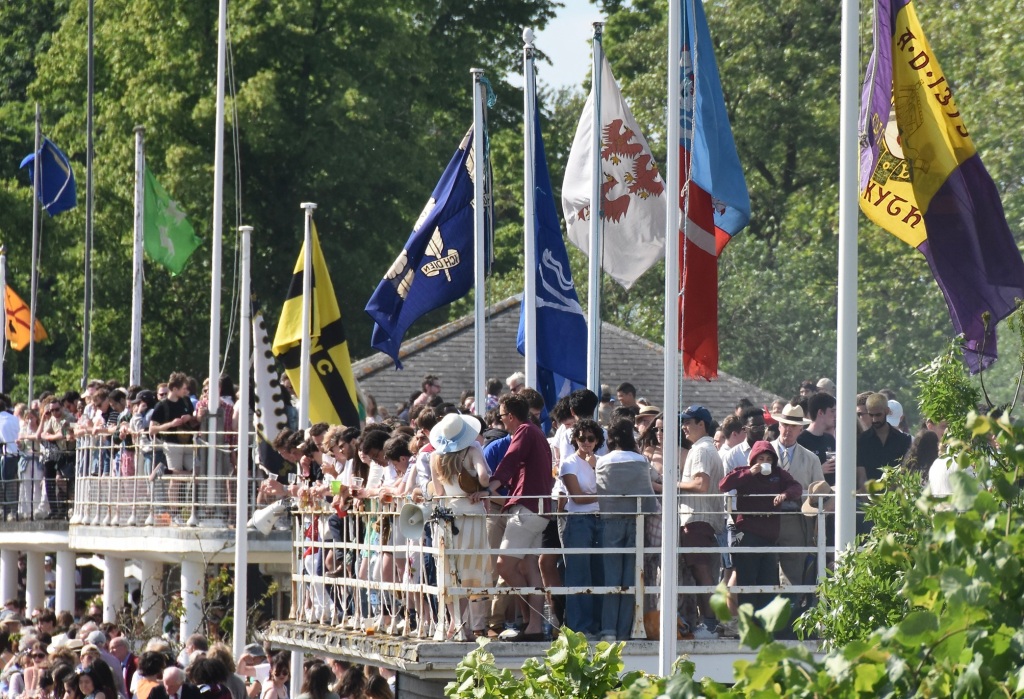
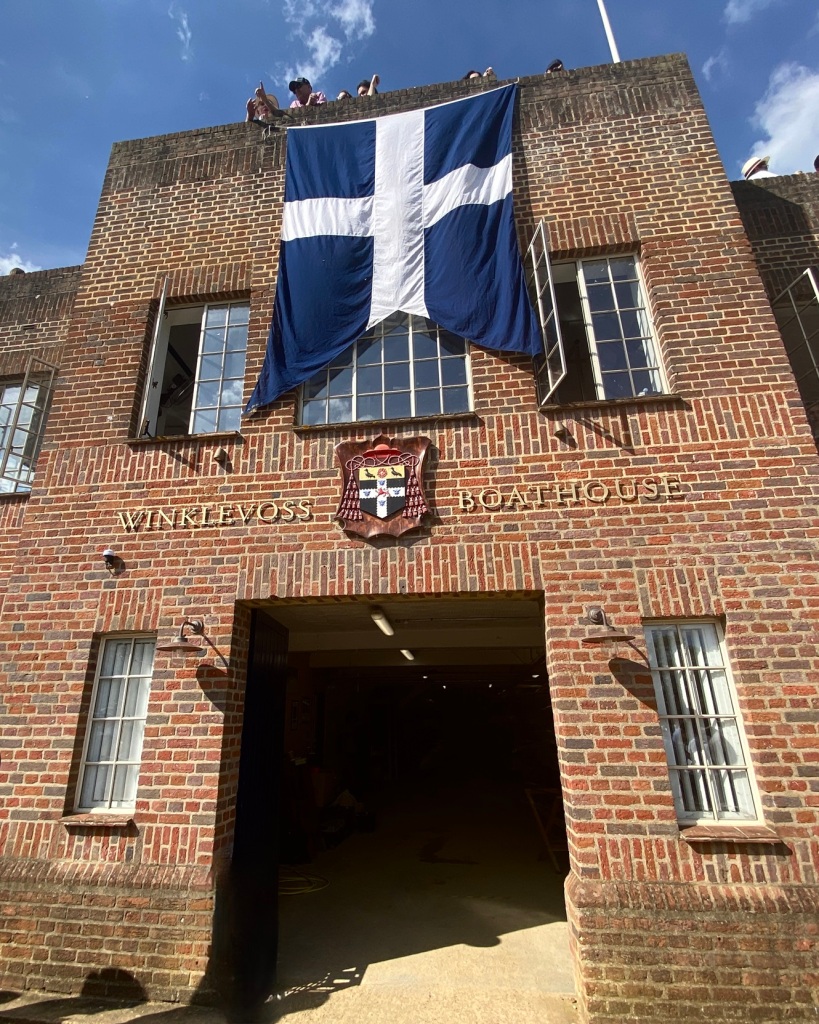
On 25 May, I managed to see the final couple of hours of the 2024 Summer Eights, just catching the end of Men’s and Women’s Division Two and all of both Division Ones. As I had to arrive late, leave early and not move very far from the finish line, I ended up taking very few pictures of any actual rowing! My brief visit was not long enough to properly capture the event as I would wish but, hopefully, the pictures below will suggest some of the spirit of the occasion.


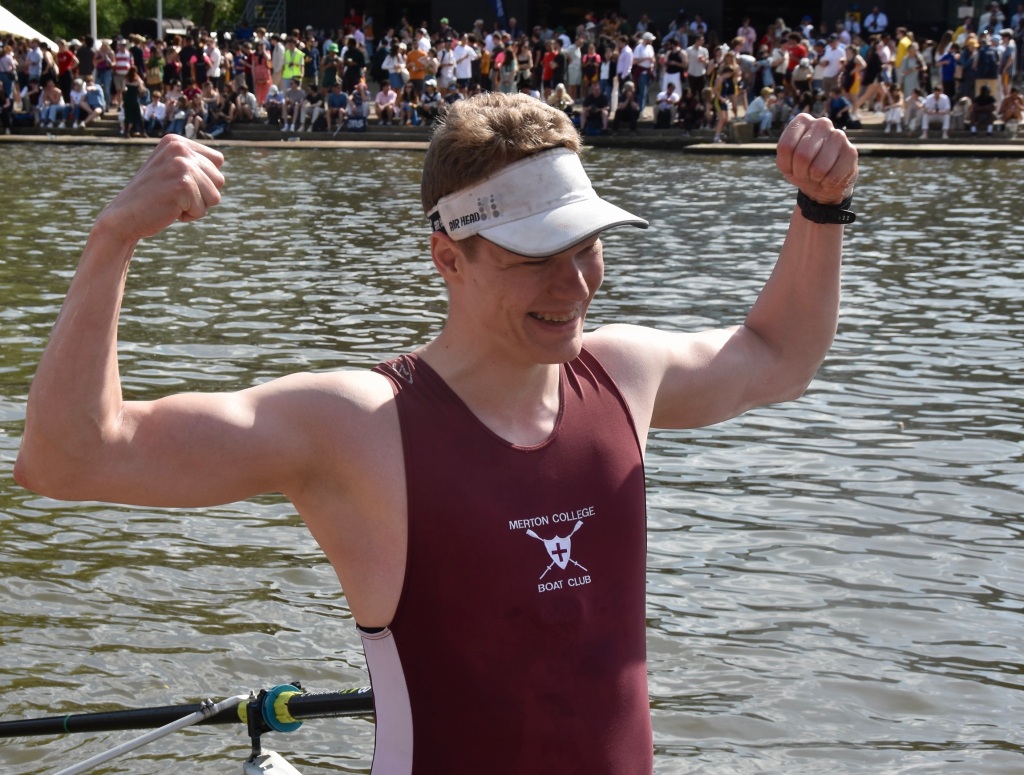






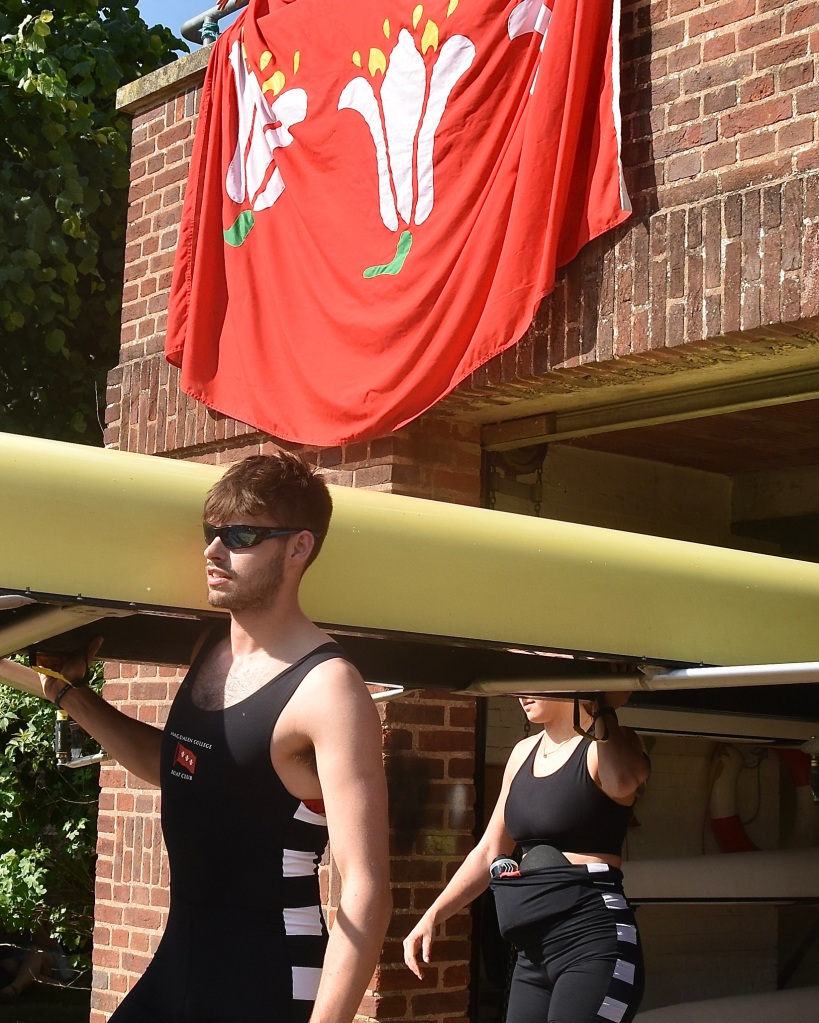


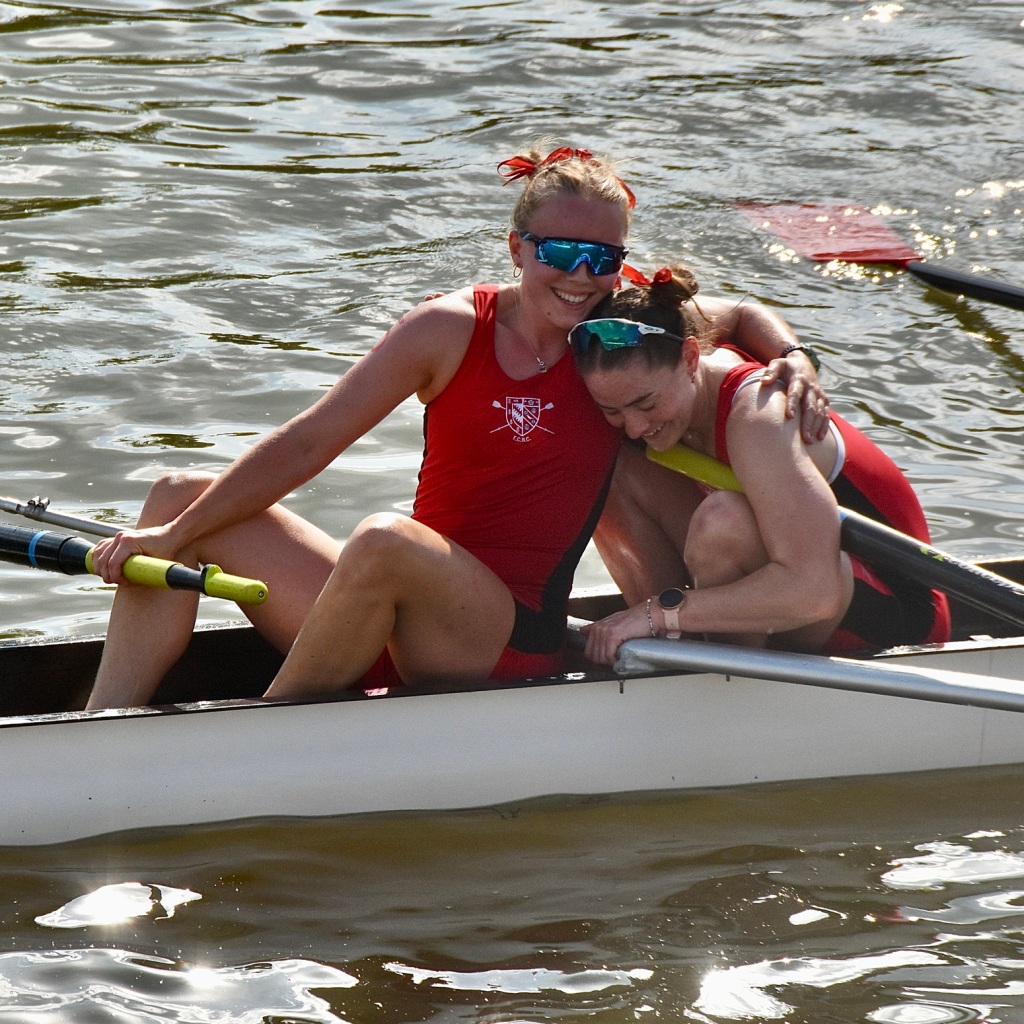

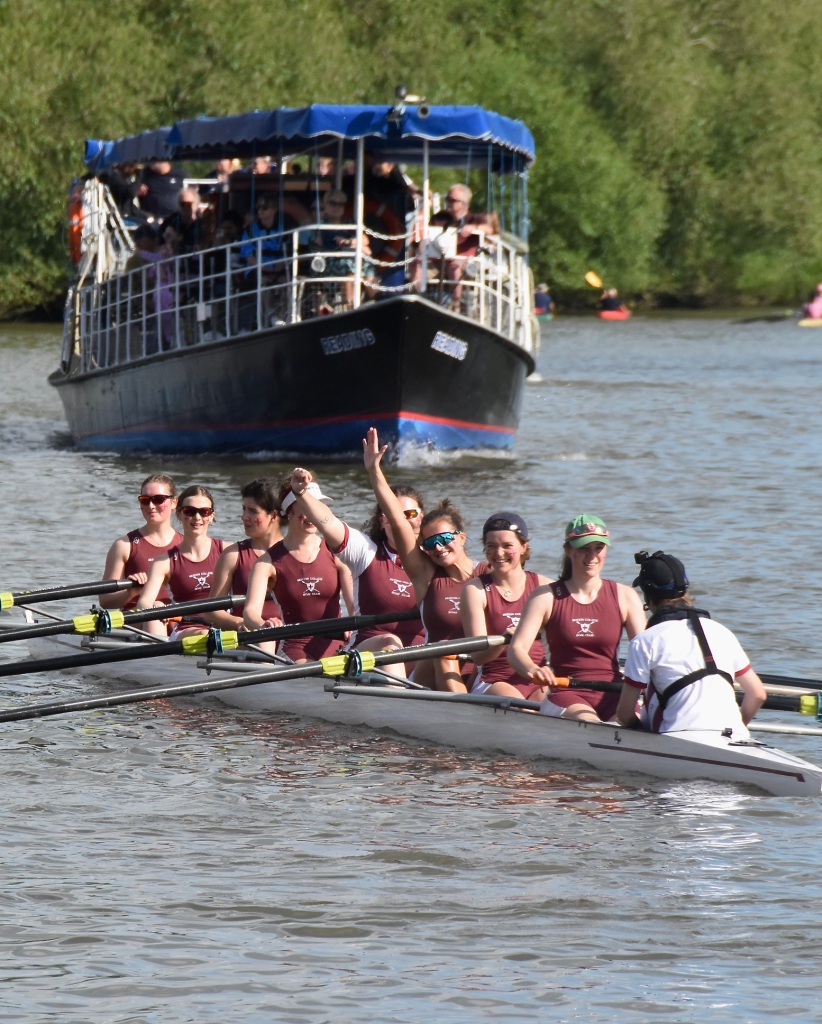

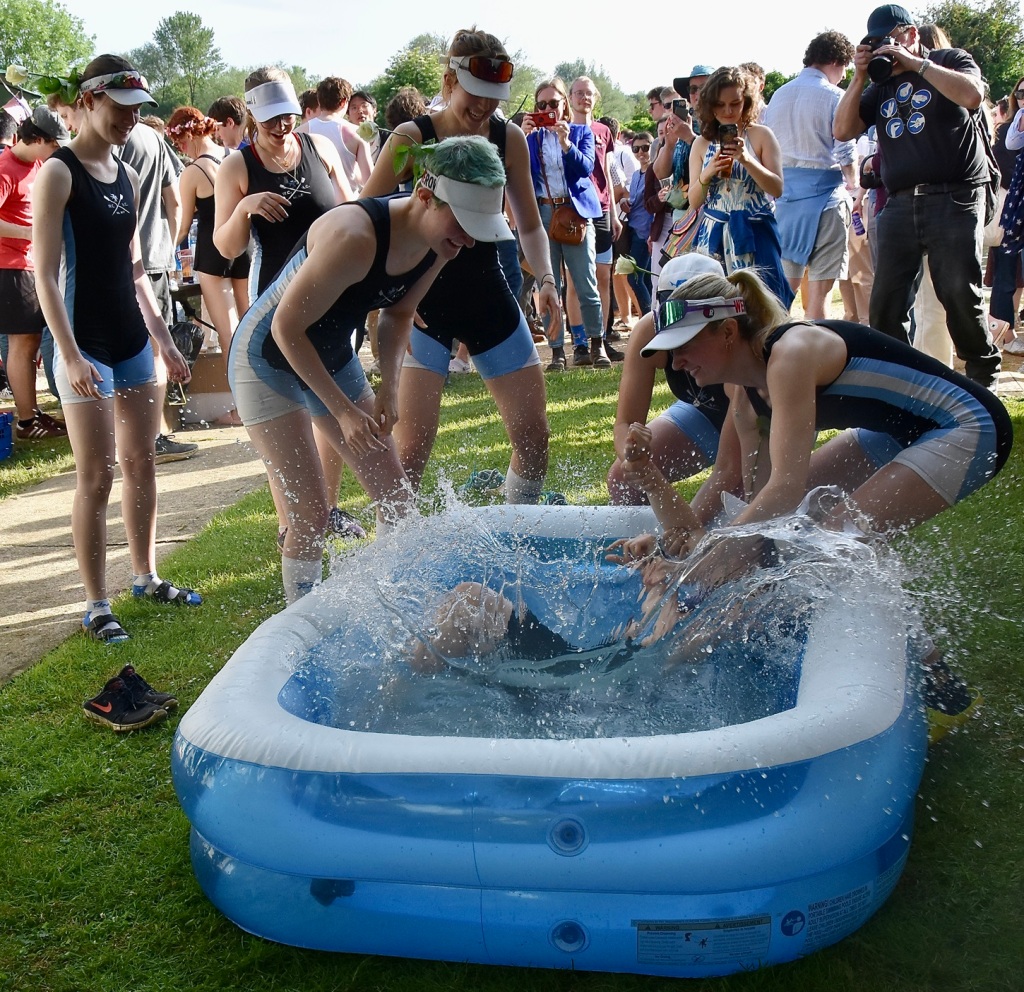
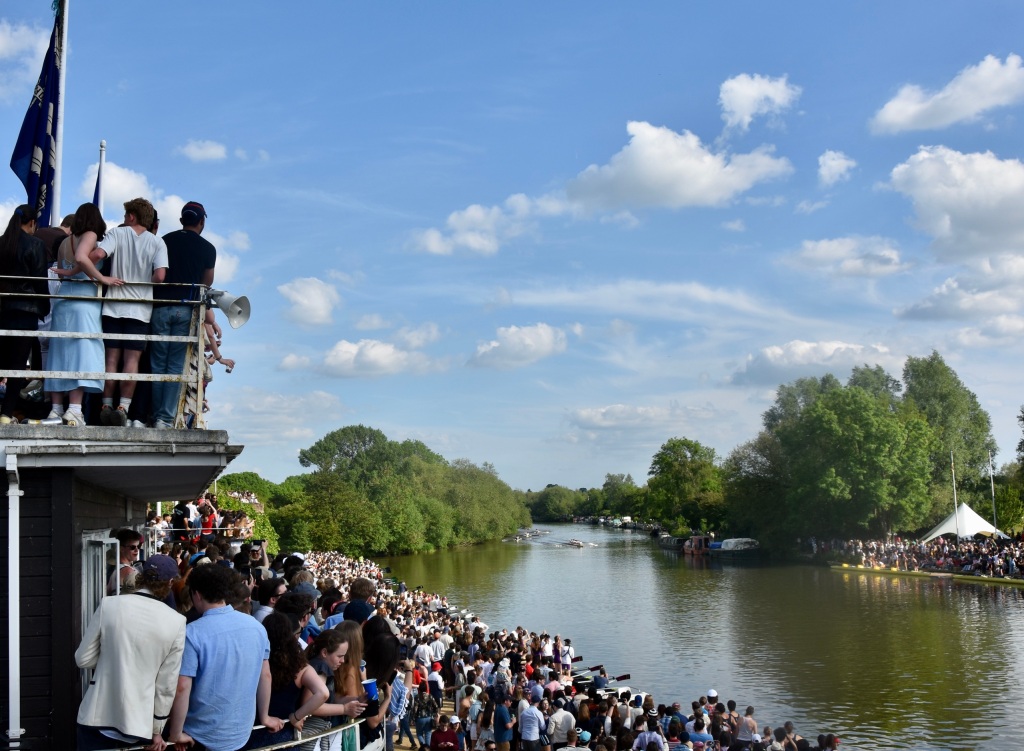


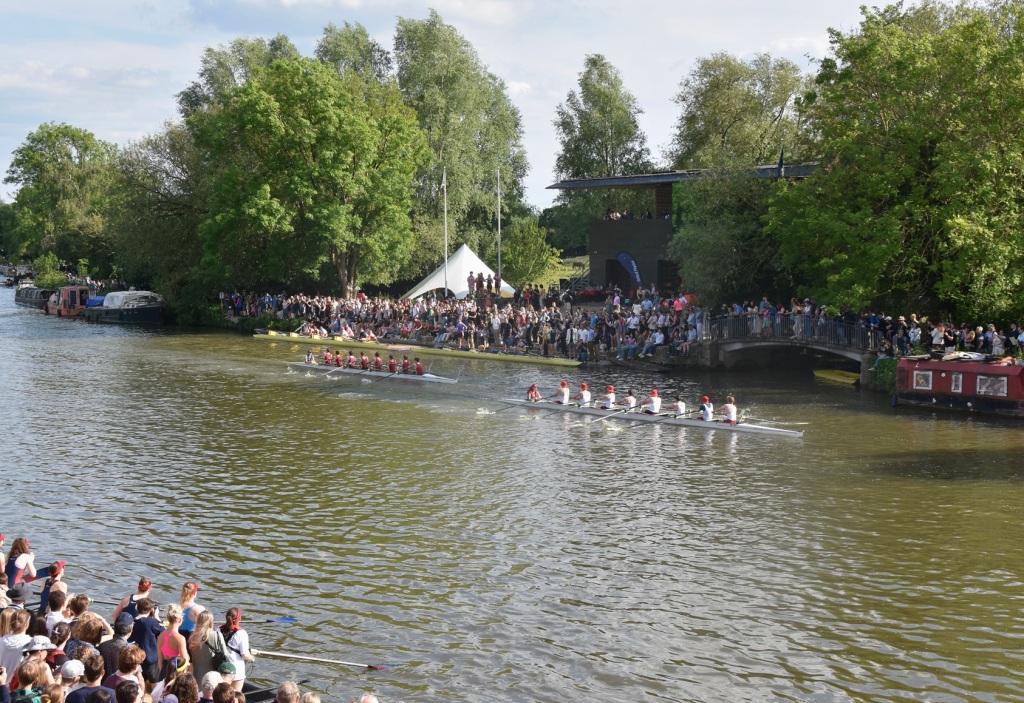



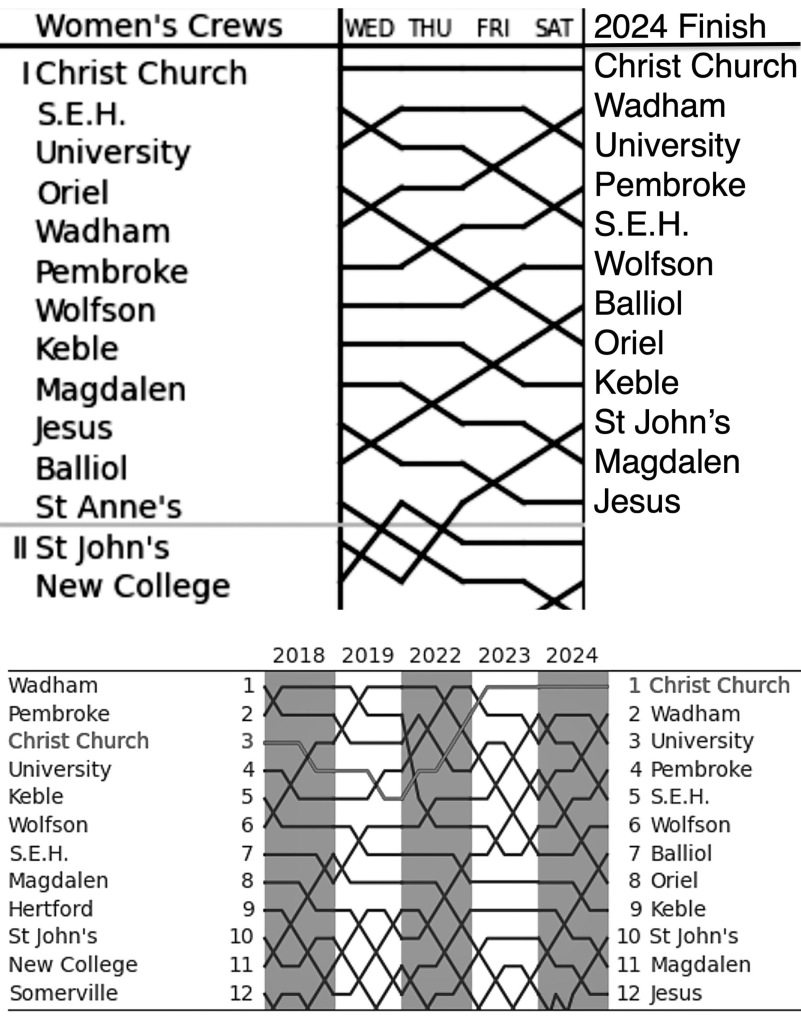

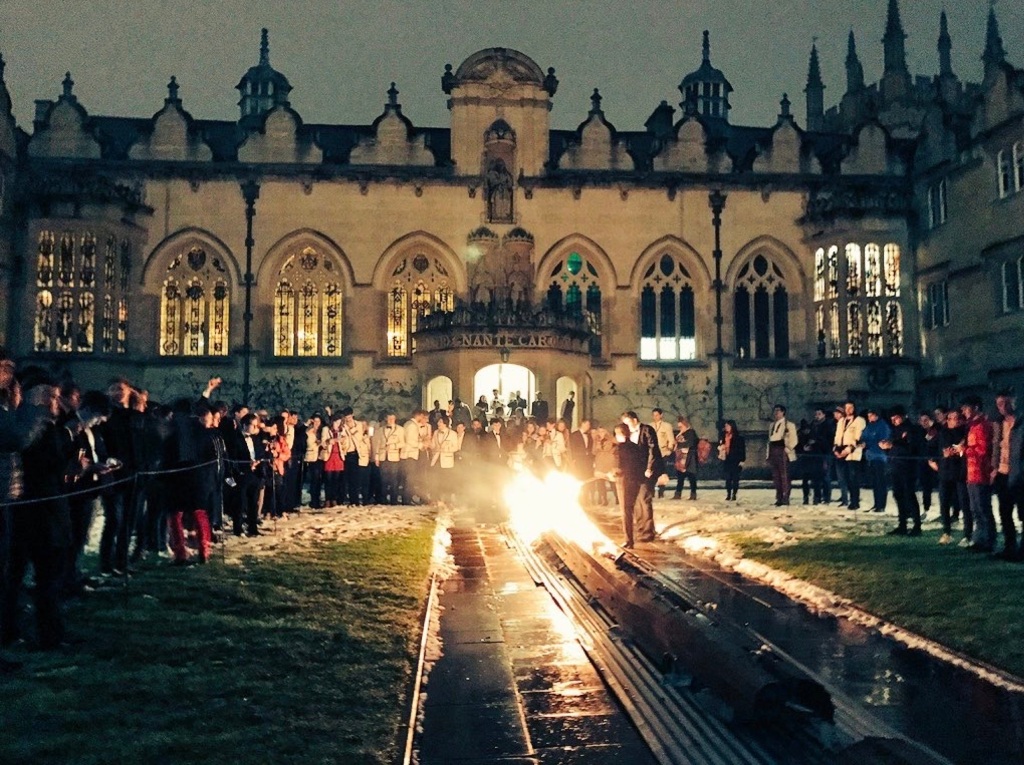
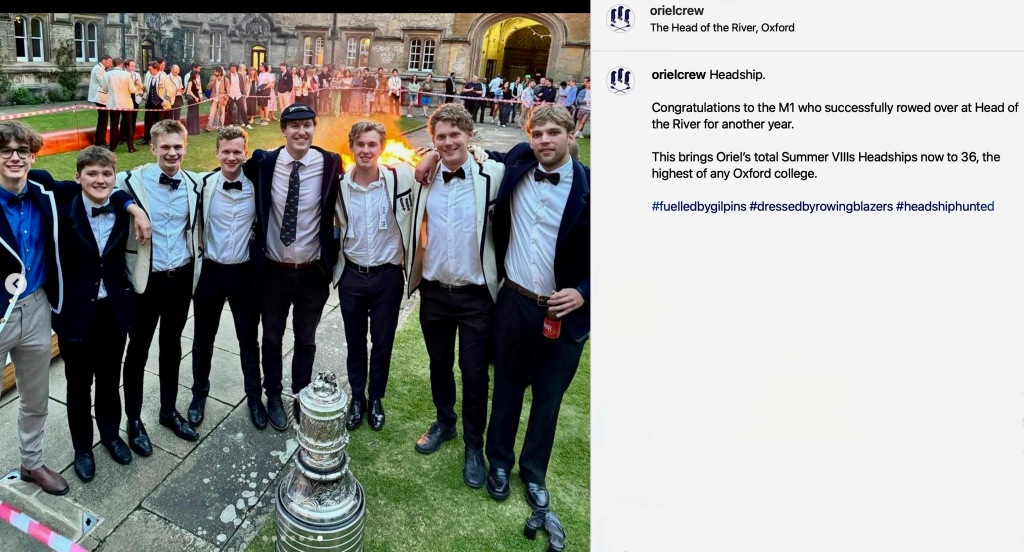
This year was my first visit to Summer Eights since 2022. At that time I wrote:
Because of river conditions at Oxford, rowing was almost totally lost in the 2019 Michaelmas term (October – December) and in the 2020 Hilary term (January – March). Due to the persistent high stream, the 2020 Torpids turned into a single day event. The 2020 and 2021 Summer Eights were cancelled due to the pandemic and in 2021 a version of Torpids was moved from its usual early March date to the early June slot vacated by the Eights…
With time on the water greatly reduced, college boat clubs had coaches, rowers and coxes who should have been trained by those from the years immediately above them but who, by the time rowing restarted, had largely graduated and left university. Some wondered what effect all this would have on the bumps. I thought that the standard of division one rowing may have been lower than that I had seen in previous years. Also, on a warm day there seemed to be fewer spectators and, for better or worse, less drinking alcohol than in the recent past…
Although the 2024 Torpids were cancelled due to stream conditions, I had the impression that this year, Eights Week was back to “pre-Covid” standards on and off the water. Perhaps it should not be surprising that, after 200 years, the clever lunacy that is bump racing is a fairly resilient event.

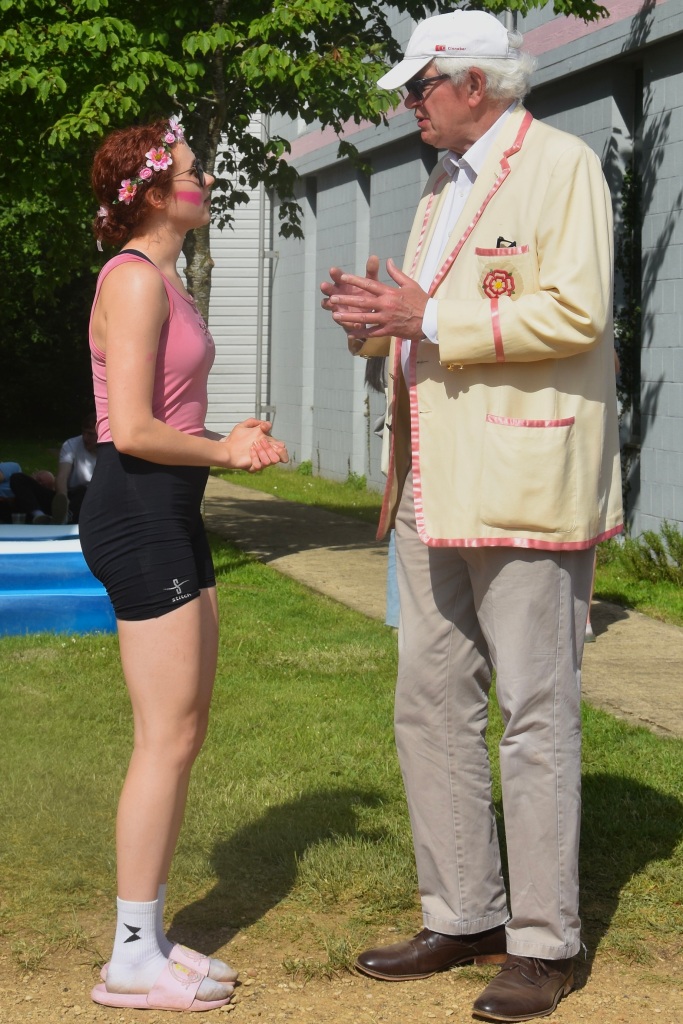

Sue Fenton writes:
This year marks the 50th anniversary of the Ladies Division in the Cambridge May Bumps, held in June (!) Until 1974, women had rowed in the Bumps in the men’s divisions as a Cambridge University Women’s Boat Club crew. With the admission of women into the previously all male colleges, there were more female rowers and so a division, in IVs, was added to the programme in 1974, with 12 crews from six different colleges – Newnham fielded four of these crews.
In 1976, a division for women was added to the Lent Bumps.
It is intended to mark the occasion with a row past of former oarswomen on the last day of the bumps. Saturday 15 June, 1400 to 1700 on Ditton Meadows.
Unfortunately my duties at Nat Vets in Nottingham will mean that my visit to this year’s Mays will have to be on the Friday rather than Saturday. If alumnae are on parade on the Saturday, perhaps they will include some of the people whom I coached in 1984 when LMBC ladies won their first blades (in Lents and in Mays).